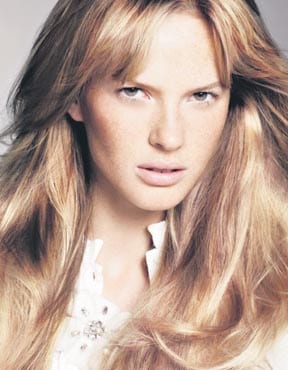
The hairdressing industry is an industry I know very well and I’m very passionate about so I couldn’t help rushing to its defence when I heard the ludicrous points being made to stir up this recent debate.
It comes as no surprise to women that we pay significantly more than men to get our hair cut and the survey also shows that it costs men more to attend a unisex salon rather than a traditional barber. No surprise there either really. Charges are also higher in Dublin than the rest of the country, according to the survey published in Consumer Choice magazine, as is the case with everything else – house prices, rent, restaurants, and the price of a pint.
The highest price in the survey for highlights and a wash, cut and blow-dry was the €190-€210 charged in Toni Guy on Dublin’s Dame Street. The same service costs €80 in Carrigaline Hair Studio in Co Cork. Prices for a ladies wash, cut and blow-dry ranged from €35 at Zenith in Galway and the Lynda Maher Hair Studio in Carlow to €62-€85 in Toni Guy in Dublin. Prices quoted for a mens cut and blow-dry [is this really a blow-dry, or a blast dry? There is a huge difference…] varied from €10 at Lynda Maher’s in Carlow to €46-€63 at Toni Guy in Dublin. A survey of barbershops showed a variation in prices for a dry cut from just €4.99 at Dillon Hair Studio on Dublin’s Wellington Quay to €20-€26 at Knights in the St Stephen’s Green shopping centre.
The people carrying out the survey obviously felt they could make these comparisons as if they were pricing a loaf of bread or pint of milk in different geographical areas around the country. It’s obvious they don’t have much of an understanding of the hairdressing industry, and I’m sure some of the statements were frankly insulting to many hairdressers who were expected to then defend their trade to the uninformed who simply looked at numbers to draw vast and misunderstood conclusions.
Furthermore, the magazine, which is published by the Consumers’ Association of Ireland, is reported as being critical of the failure of many hair salons to offer women the option of a dry cut. Most shops said this was available only for a fringe trim. And rightly so in my opinion.
“They say they can’t cut the hair very well if it is not washed beforehand and that their staff are only trained to cut wet hair,” the magazine states. “We think that this is often just a method of getting customers to pay the full price and that customers should be given a choice.”
The people carrying out this survey certainly didn’t consult any hairdressing training institutions before making those sweeping statements. Salons aspiring to standards of excellence, which I’m glad to report we have many of in Limerick City and County, would never encourage dry cuts as they are trained to perform precision cutting at the highest level and this cannot be achieved by cutting dry hair. If somebody tried to convince me to have a dry cut I’d run out the door – you may as well be standing there with a gardening shears offering me a haircut. No thanks, our hair is our crowning glory, I wouldn’t take risks with a gardening shears, and I certainly wouldn’t take risks with somebody wanting to give me a dry cut and thinking that’s ok. Sorry if this makes me a hairdressing snob in some people’s books but let’s er call a spade a spade.
The magazine says salons should break down their services by price and let customers choose exactly what they do and do not want. In this way, they could save money by, for example, omitting the blow dry where it isn’t required. Hairdressers are required by law to display their prices so I thought they were breaking down their prices anyway? In my experience, I know how much my haircut costs, I know that price is for a shampoo, cut and blow-dry. I know if I ask for a colour how much that will cost after discussing it with the technician and agreeing on exactly what we are going to do – and if I’m not sure of the cost because perhaps I’m not familiar with all the terms being used, I can ask her to break it down and explain what a ‘semi’ colour is, and what ‘lights’ over it will do, and how much the combined total will be. As for the blow-dry not being required, I’m sure this may be accommodated in some circumstances but I’m there to have my hair done and to feel great leaving, not to get up and leave unsatisfied when I’m only half finished.
Live on air with Joe Nash, he was pushing the point that he only pays €15 for his haircut, and how can we justify paying €45-€70 for ours? I asked him how often he gets his hair cut, and we calculated that men do cut their hair much more often than women. In Joe’s case it was perhaps three or four haircuts for him, to every one for me. In that sense the male-female argument does get turned on its head, as we’re essentially paying the same over a given length of time. Of course women’s hairdressing is a completely different ball game to barbering, but each is as technical as the other. Plus we must remember there is a lot more finishing to women’s hair. While men may take a blast dry and some product, women often need 30 minutes of a blow-dry after their cut before being completely finished with their appointment. How can we not expect to pay for the time this takes?
The old adage of ‘you get what you pay for’ really does apply in the hairdressing industry, in my experience at least. If you are going to somebody who has worked at the highest level for many years and has a demanding clientele, you have to expect to pay more for their service. Like the bigger law or accountancy firms, their rate goes up with more experience and demand.
It’s up to each individual to decide how much they can afford on their hair, and to prioritise whether that will go on the cut, or the colour, or a combination of both. Whatever you choose, seek out quality in the industry, there is good value to be found on every budget – training classes offer very affordable rates if this is as much as you can afford though do expect the appointment to take longer than it would normally take and always ensure there is sufficient supervision in any training environment.
Hairdressing is a trade, acquired in most cases by a four-year in-salon apprenticeship. A haircut cannot be comparatively priced like one would price a pint of milk, or a loaf of bread. Similarly a carpenter’s work cannot be priced this way, or any other trade, it is all about quality of work. It is a business where the good succeed; where the cream rise to the top, and their prices reflect that. Don’t let whatever accountants or statisticians who create these surveys influence your hairdressing spend. Only you know how happy you feel after you’ve had your hair done. Only you know that spring in your step. A wise man that phoned into the Limerick Today show described his wife as going to ‘therapy’ every week as she visited her hair salon, and said that she was a ‘new woman’ afterwards.
The people at Consumer Choice magazine may have neglected to factor this into their survey, that it’s about the whole experience – or perhaps they just don’t get it at all.
Have you an opinion on this subject? We’d love to hear it. Email [email protected] or search ‘Limerick Post Fashion & Beauty’ on facebook.





